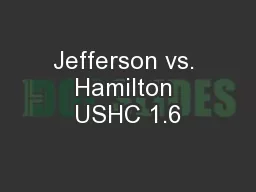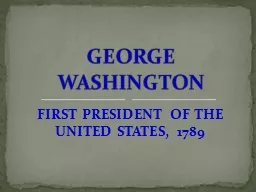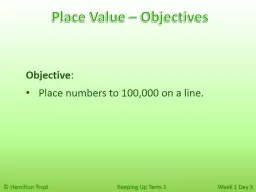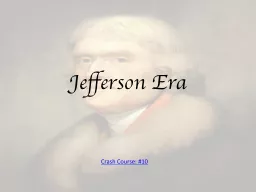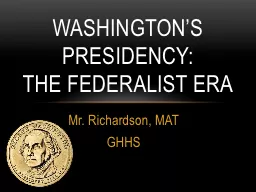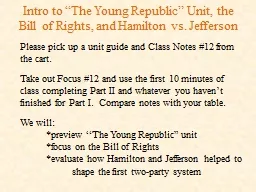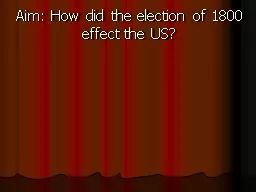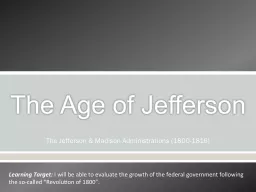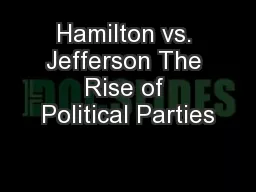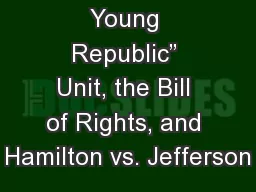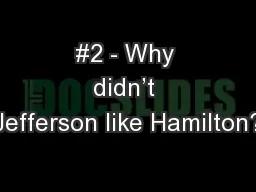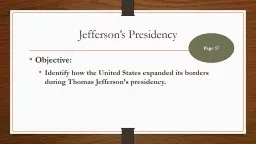PPT-Jefferson vs. Hamilton USHC 1.6
Author : min-jolicoeur | Published Date : 2018-10-09
Analyze the development of the twoparty system during the presidency of George Washington including controversies over domestic and foreign policies and the regional
Presentation Embed Code
Download Presentation
Download Presentation The PPT/PDF document "Jefferson vs. Hamilton USHC 1.6" is the property of its rightful owner. Permission is granted to download and print the materials on this website for personal, non-commercial use only, and to display it on your personal computer provided you do not modify the materials and that you retain all copyright notices contained in the materials. By downloading content from our website, you accept the terms of this agreement.
Jefferson vs. Hamilton USHC 1.6: Transcript
Download Rules Of Document
"Jefferson vs. Hamilton USHC 1.6"The content belongs to its owner. You may download and print it for personal use, without modification, and keep all copyright notices. By downloading, you agree to these terms.
Related Documents

